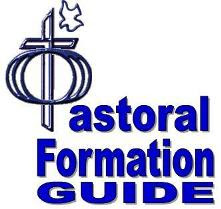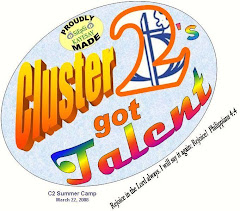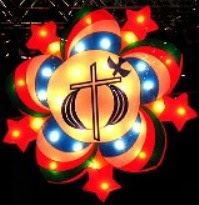[[[see link]]]
Have you told yourself a thousand times you were going to read the Bible? Do you fall asleep when you try? Are your bewildered by the Bible, feel lost, and confused? Have you stuffed yourself with the things of the world and become spiritually anorexic so as to have little appetite for the Bible? Then this is the pamphlet for you.
COME, HOLY SPIRIT
"No one knows what lies at the depths of God but the Spirit of God." — 1 Corinthians 2:11
The Bible reveals the depths of God and only through His Spirit can we understand it. We must yield to the Spirit and thereby crucify the flesh (Gal 5:24-25). If we crucify our selfish, pleasure-seeking life-style, we will not stifle the Spirit (1 Thes 5:19), become spiritually anorexic and lose our desire for the spiritual food of God's word. We must ask Jesus our Lord to stir into flame the gift of the Holy Spirit (2 Tm 1:6), and then ask the Spirit to teach us the Bible (see Jn 14:26). "'Whenever he turns to the Lord, the veil will be removed.' The Lord is the Spirit" (2 Cor 3:16-17).
PRAY IN THE SPIRIT
"The Spirit too helps us in our weakness, for we do not know how to pray as we ought." — Romans 8:26
Before reading the Bible we pray to and for the Spirit. Then we pray during reading the Bible. We stop repeatedly to accept God's promises and ask for understanding of the Scriptures. We also pray after reading the Bible to plant and water the seed just sown. The Bible is our prayer book. We read on our knees and turn the pages with praying hands.
LOVE IN THE SPIRIT
"...but have not love, I gain nothing." —1 Corinthians 13:3
As we pray in the Spirit, we not only understand the Bible but begin to love it. We must have a deep love for the word before we have a deep understanding of it. With Jeremiah, we should say: "When I found Your words, I devoured them; they became my joy and the happiness of my heart" (Jer 15:16). At the eucharistic liturgy, we see the priest or deacon pick up the gospel and kiss it. When we fall in love with God's word, we may also want to kiss the Bible as an expression of our love.
With love in our hearts, we will receive the Scriptures "not as the word of men, but as it truly is, the word of God at work within you who believe" (1 Thes 2:13). We will not be infected with secular humanism that treats the Bible as something to be subjected to the prideful notions of our society. The fear of the Lord is the beginning of wisdom (Ps 111:10). A reverential awe and love for God's word is the beginning of understanding it.
That we may fall in love with God's word, sometimes the Spirit will move us to read and pray over the passages in God's word concerning God's word. The Bible reveals the Bible. As we get into God's word, it gets into us. Our hearts burn with love (Lk 24:32). Read and pray over the following Scriptures: (Is 55:10-11; Jn 1:1-14; Rm 10:17; 2 Tm 2:8-9; 3:16-17; Heb 4:12-13; Rv 19:11,13). Take your time. Give yourself a week. Ask the Spirit to give you a divine love for the word.
Finally, the Holy Spirit will give us a great love for the Church (see Eph 5:25) "the pillar and bulwark of truth" (1 Tm 3:15) through which the Lord has given us the Bible.
READ IN THE SPIRIT
"The Holy Spirit Whom the Father will send in My name, will instruct you in everything." —John 14:26
The Holy Spirit teaches us everything, not only how to pray and love, but also how to read the Bible. The Spirit often leads us to read first the daily eucharistic readings.
Second, He will have us read Matthew, Mark, Luke, and Acts. Some people meet Jesus and begin to understand the Bible through reading the gospel of John, but it is better to start with the synoptic gospels. We should read the Bible as we eat an Oreo cookie, from the center out. Reading Genesis or Revelation last, not first. We should read the synoptic gospels and Acts first because in these books we enter most directly into the life and person of Jesus Christ. And it is only in Christ that the veil over the Scriptures is removed (2 Cor 3:14).
Third, after reading the eucharistic readings and the synoptic gospels, the Spirit may call us to re-read these same books and pray over the life and person of Jesus for two, three, or more readings. The Catholic Church has followed this approach by emphasizing the gospels in the liturgical cycle of readings. After several readings of the synoptic gospels, the Spirit may lead us to read Paul's letters, the prophets, or the psalms.
Fourth, the Spirit calls us to study the Bible by memorizing verses, checking cross-references, referring to footnotes, consulting Biblical dictionaries and commentaries, and doing word- and theme- studies. But we should be careful not to get into this kind of Bible reading and study until we have the strong foundation of hearing the prophetic word through the eucharistic readings and focusing on Jesus through the synoptic gospels and Acts. Otherwise, we may get off into an intellectual head-trip instead of a relationship with the Lord.
SHARE IN THE SPIRIT
"No one lights a lamp and puts it under a bushel basket or under a bed; he puts it on a lampstand so that whoever comes in can see it" —Luke 8:16
We should always read the Bible with a consciousness of our responsibility to share anything we receive. If we put every blessing, insight, or inspiration on the lampstand to give light to all in the house, the Lord will continually light our lamp. The word will almost jump off the page. The more we give, the more we receive (Mk 4:24).
We must share the word "in any and every way" (Phil 1:18). The Spirit will inspire us to witness on the phone, in letters, in conversations, on the street, in our families, and in our churches. If we don't put the word under a bushel basket of self and fear, we will experience the word alive. Those who know Jesus and His word the best are not those who have read and studied the most but those who have shared the most. If we sow bountifully, we shall reap bountifully (2 Cor 9:6).
PUT YOUR HAND ON THE BIBLE
"You will receive power when the Holy Spirit comes down on you." —Acts 1:8
In the USA, we have a custom of putting our hand on the Bible and making a commitment. I encourage you to do that right now. Not by your power or might, but only by the power of the Spirit will you be able to take a step forward in reading and living God's word (see Zec 4:6). Ask for the Spirit and verbally (with your hand on the Bible) make the commitment you believe the Lord is asking of you. For example, promise:
"I will read the Bible for five minutes a day."
"I will read the daily eucharistic readings before Mass."
"I will read one paragraph of the Bible with my family before supper each day."
"I will write a Bible verse on the top of my letters."
"I will share the gospel with ____(name)____ before 24 hours elapses."
"I will read with my spouse a paragraph of the Bible daily."
"I will personally thank my pastor for teaching the Bible."
Seek God's will and then obey by the power of the Spirit. Now put your hand on the Bible and pray.
SIMPLE READING GUIDES
The Simple Reading Guides are designed to motivate the average person to read the Bible and apply it to everyday life. Ideal for beginning Bible readers, or those who need help in reading the Bible consistently.
Bible Reading Schedules:
Simple Reading Guides (book by book):
Simple Reading Guides (chapter by chapter):
Nihil obstat: Rev. Edward Gratsch, June 6, 1997.
Imprimatur: † Most Rev. Carl K. Moeddel, Vicar General and Auxiliary Bishop of Archdiocese of Cincinnati, June 12, 1997.
The Nihil obstat and Imprimatur are a declaration that a book or pamphlet is considered to be free from doctrinal or moral error. It is not implied that those who have granted the Nihil obstat and Imprimatur agree with the contents, opinions, or statements expressed.


































